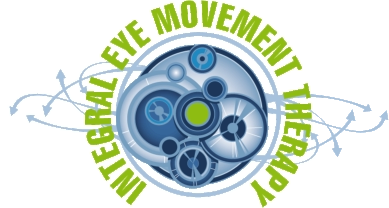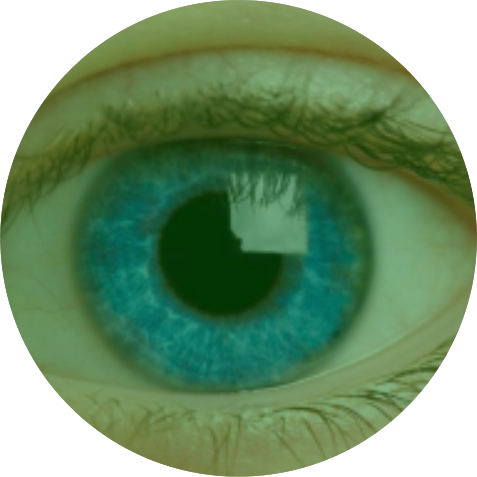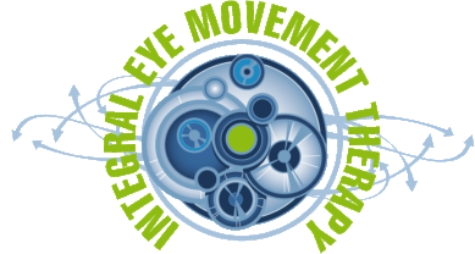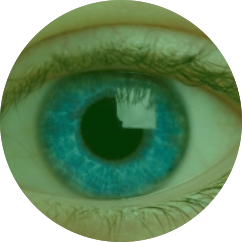







Integral Eye Movement Technique (IEMT) developed out of these models following the
observation of a number of neurological phenomena that occur during the eye
movements at the point that the problematic imagery changed its emotional coding.
Then there was the development of a specific set of applications of this phenomenon
that enabled IEMT to be applied to the areas of neurological imprints – specifically,
emotional imprints and imprints of identity.
Emotional imprinting occurs when a person lays down a new kinesthetic response to an
experience. This teaches the person how to feel about certain things. For example, how many of us
when told by the boss that he'd "like a word" in his office immediately feel like a school child about
to be told off. This is an emotional imprint in action.
IEMT addresses and resolves the question, "how did this person learn to feel the way they feel
about the things that they feel bad about?"
Identity imprinting occurs during life long development and is
constantly evolving and changing. Many aspects of identity are
attributed and occur neurologically as a feedback response to the
environment. An example of this is the production
worker who yesterday was "one of the boys" and today,
following promotion to lower management, is now
officially an enemy to his former friends and colleagues.
Other "deeper" aspects of identity are more permanent and are
"feed-forward" into the environment. These are the aspects of identity that tend to occur in all
contexts, with some being more resilient than others. Examples of this are gender identity, identity
as a father/mother, brother/sister and so forth.
Thus, IEMT also addresses the issue of, "how did this person learn to be this way?"
In some cases, the person can adopt aspects of identity that can be problematic. For example, an
emotional imprint might be, "I feel unhappy" whilst and identity imprint might be, "I am an
unhappy person" or even, "I am a depressive."
By specifically addressing the identity imprint this enables the therapist to by-pass the beliefs that
often support the undesired identity such as, "I cannot do that because I am a depressive" and so
forth.
IEMT is a proposed brief therapy and an evolving field that enables a core state change in minimal
time. The two-day practitioner training covers both the emotional and identity imprint models, the
relevant neurological anatomy, physiology and the manifest neurological phenomena and the skills
required to deliver the model effectively and elegantly.
It must be emphasised: IEMT is not the grand unified theory of therapy and change work and is still
a developing model, but is a very useful adjunctive for the trained therapists and when used in the
right hands can provide an excellent remedial tool for emotional change and a generative tool for
identity change. Practitioners are reporting that IEMT enables excellent results where previously a
good outcome might have appeared improbable.
For more details and a wealth of information on IEMT do check out the main IEMT website.
CLICK HERE to check out the main IEMT website.
Or ask me a question by clicking on the button.
So who discovered this?
A wonderful man called Andrew T. Austin discovered/developed/created IEMT, as well as Metaphors of Movement, both of which myself, Turan Mirza, have had the the pleasure of training with Andrew. Watch this video where he talks about IEMT.
Cookies are used on this site - read my Privacy Policy
© Feel Good Hypnosis 2015-2024
Quick Contact Me:
By E-Mail: Turan@feel-good.today By Phone: Office: 028 94 45 34 77 Mobile: 077 53 23 41 77



So you want to
know more
about IEMT
In the specific application of trauma recovery and post traumatic stress disorders experience readily shows that application of specific eye movement therapies is particularly effective with regards to intrusive imagery and "flashback" phenomena. Essentially, the method involves holding the problematic imagery in mind whilst the eyes are moved in different directions. The result of this is often that the imagery loses its emotional impact and becomes far less disturbing. The sometimes effective therapeutic model of EMDR is built on this principle.
PTSD
Insomnia
Flashbacks
Panic Attacks
Stress and Anxiety
Fears and phobias
Sexual related issues
Improving productivity
Dealing with overwhelm
Confidence and self-esteem issues
Reducing the impact of negative
experiences
Feelings of anger guilt, regret and remorse
Overcoming long term identity issues such
as divorce and redundancy


IEMT
Applications
IEMT is very effective when working with a wide range of issues, and include, but not limited to this list:

Integral Eye Movement
Technique (IEMT) developed
out of these models
following the observation of
a number of neurological
phenomena that occur during
the eye movements at the point that the
problematic imagery changed its emotional
coding. Then there was the development of a
specific set of applications of this phenomenon
that enabled IEMT to be applied to the areas of
neurological imprints – specifically, emotional
imprints and imprints of identity.
Emotional imprinting occurs when a person lays
down a new kinesthetic response to an
experience. This teaches the person how to feel
about certain things. For example, how many of
us when told by the boss that he'd "like a word"
in his office immediately feel like a school child
about to be told off. This is an emotional imprint
in action.
IEMT addresses and resolves the question, "how
did this person learn to feel the way they feel
about the things that they feel bad about?"
Identity imprinting occurs during life long
development and is constantly evolving and
changing. Many aspects of identity are
attributed and occur neurologically as a
feedback response to the environment. An
example of this is the production worker who
yesterday was "one of the boys" and today,
following promotion to lower management, is
now officially an enemy to his former friends
and colleagues.
Other "deeper" aspects of identity are more
permanent and are "feed-forward" into the
environment. These are the aspects of identity
that tend to occur in all contexts, with some
being more resilient than others. Examples of
this are gender identity, identity as a
father/mother, brother/sister and so forth.
Thus, IEMT also addresses the issue of, "how did
this person learn to be this way?"
In some cases, the person can adopt aspects of
identity that can be problematic. For example,
an emotional imprint might be, "I feel unhappy"
whilst and identity imprint might be, "I am an
unhappy person" or even, "I am a depressive."
By specifically addressing the identity imprint
this enables the therapist to by-pass the beliefs
that often support the undesired identity such
as, "I cannot do that because I am a depressive"
and so forth.
IEMT is a proposed brief therapy and an evolving
field that enables a core state change in minimal
time. The two-day practitioner training covers
both the emotional and identity imprint models,
the relevant neurological anatomy, physiology
and the manifest neurological phenomena and
the skills required to deliver the model
effectively and elegantly.
It must be emphasised: IEMT is not the grand
unified theory of therapy and change work and
is still a developing model, but is a very useful
adjunctive for the trained therapists and when
used in the right hands can provide an excellent
remedial tool for emotional change and a
generative tool for identity change. Practitioners
are reporting that IEMT enables excellent results
where previously a good outcome might have
appeared improbable.
For more details and a wealth of information on
IEMT do check out the main IEMT website.
CLICK HERE to check out the main IEMT website.
Or ask me a question by clicking on the button.
So who discovered this?
A wonderful man called Andrew T. Austin discovered/developed/created IEMT, as well as Metaphors of Movement, both of which myself, Turan Mirza, have had the the pleasure of training with Andrew. Watch this video where he talks about IEMT.
Cookies are used on this site - read my Privacy Policy
© Feel Good Hypnosis 2015-2024
Quick Contact Me:
By E-Mail: Turan@feel-good.today By Phone: Office: 028 94 45 34 77 Mobile: 077 53 23 41 77



So you
want to
know more
about IEMT
In the specific application of trauma recovery and post traumatic stress disorders experience readily shows that application of specific eye movement therapies is particularly effective with regards to intrusive imagery and "flashback" phenomena. Essentially, the method involves holding the problematic imagery in mind whilst the eyes are moved in different directions. The result of this is often that the imagery loses its emotional impact and becomes far less disturbing. The sometimes effective therapeutic model of EMDR is built on this principle.
PTSD
Insomnia
Flashbacks
Panic Attacks
Stress and Anxiety
Fears and phobias
Sexual related issues
Improving productivity
Dealing with overwhelm
Confidence and self-esteem
issues
Reducing the impact of negative
experiences
Feelings of anger guilt, regret and
remorse
Overcoming long term identity
issues such as divorce and
redundancy


IEMT Applications
IEMT is very effective when working with a wide range of issues, and include, but not limited to this list:




















